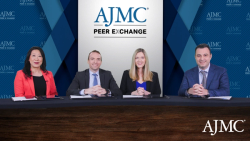© 2025 MJH Life Sciences™ and The Center for Biosimilars - Biosimilars, Health Economics & Insights. All rights reserved.
Can Biologics Expand in Cardiology, and What Is the Role for Biosimilars?
Some of the problems with use of biologics in the cardiovascular field resemble those seen with all biologic drugs, while the authors say others are unique to the complexity of cardiovascular disease.
A new paper by a group of authors from Italy explores the future of biologics to treat cardiovascular diseases (CVDs), as the authors ask why the success seen with these drugs in the treatment of cancer or autoimmune diseases has not been seen in the CVDs, which accounts for much more chronic illness and morality. In discussing the prospects of biologics in CVD, the authors see hope for the use of biosimilars or biobetters as some biologics come off patent.
Some of the problems with using biologics in the CV field resemble those seen with all biologic drugs, while, the authors say, others are unique to the complexity of CVD. “Delineating these struggles will be valuable in developing and accelerating the approval of a new generation of biologics for CVDs,” say the authors, who are affiliated with several departments within the University of Trieste, Italy, and the University of Milano.
They defined biologics as those produced from living organisms and grouped these therapies into recombinant proteins and monoclonal antibodies, gene therapies, and cell therapies. Authors discussed important developments in each area, citing limitations on drug development—including cost—as well as opportunities.
Recombinant growth factors. Unfortunately, the authors write, it became clear that using recombinant growth factors to create cardioprotective effects did not work well, because the half-life of the proteins was too short “to result in any persistent therapeutic effect. More promising, they write, is the possibility of using granulocyte colony-stimulating factors (G-CSF); 2 recent publications say early use of these factors after an acute myocardial infarction (AMI) can offer improved function for up to 10 years.
Monoclonal antibodies are a “special class of recombinant proteins,” with more potential, the authors write. While these drugs have been “game changers” in cancer and autoimmune diseases, “application in the cardiovascular field remains in its infancy, and is largely directed at blunt excessive inflammation” in patients who have had AMI or have heart failure. They note the history of the cholesterol fighting therapy, the PCSK9 inhibitor evolocumab (Repatha), which failed to capture the hoped-for market share due to cost. The drug is now being studied in heart failure. A major challenge has been the lack of biomarkers to target these comparatively expensive drugs to those patients who will benefit most.
Gene therapy products. Two gene therapy products have received approval in the CVD sector. Alipogene tiparvovec (sold as Glybera), was “the world’s first gene therapy product,” for use to treat a condition that leads to hypercholesterolemia and raises the risk of heart attacks and strokes. However, its cost—at $1 million per dose—led to it being pulled from the market for lack of demand. A time-limited approval was granted for a Japanese product, Collataegene, a DNA plasmid encoding hepatocyte growth factor to treat critical limb ischemia. The authors say the difficulty with these therapies in CVD is the “polygenetic” nature of the conditions that drive disease, which makes dosing and understanding pharmacokinetics a challenge.
Cell-based therapies. Hundreds of trials have examined mesenchymal stromal cells (MSCs) in cardioprotection, even though the mechanism of action is unclear. Many trials were small, and the authors reported that a meta-analysis that looked at a total of 1907 patients found that bone marrow (BM)-derived therapy did not offer significant benefit. Still, work with BM-derived MSCs proceeds in heart failure, as 2 large, randomized, double-blind, placebo-controlled trials have occurred to study intracardiac delivery of these therapies.
Results for a trial with 55 patients showed a small increase in left ventricle ejection fraction (6%) but no change in New York Heart Association function classification. More recently, the CONCERT-HF study with 125 patients showed improved quality of life and a decline in hospitalization for heart failure for patients who received MSCs alone or with c-kit+ cardiac cells, but no changes in left ventricle ejection fraction or scar size.
Biosimilars and biobetters. As cost has been a major challenge with biologics in CVD, there is potential for a large market with off-patent products. The authors referred to both the European Medicines Agency (EMA) definition of a biosimilar as “a medicine highly similar to another biological medicine already marketed in the European Union (so-called ‘reference medicine’) and the FDA definition of “a biological product that is highly similar to and has no clinically meaningful differences from an existing FDA-approved reference product.” The authors said biosimilars can bring cost reductions of up to 25%.
Biobetters, they wrote, “require high resources during their research and development pipeline,” but have “a proven target at hand and the good efficacy of the reference biologics,” thus making them more likely to reach the market.
“Having close similarity with the reference biologic, they can be rarely patented, but they can gain market exclusivity,” the authors wrote, adding that these products can decrease the overall cost of treatment.
In the CVD therapeutic realm, the authors see the greatest short-term potential in monoclonal antibodies, “because of their long, safe, and successful application in many clinical fields and the possibility of administration multiple times at a precise dose.”
Reference
Ciucci G, Colliva A, Vuerich R, Pompilio G, Zacchigna S. Biologics and cardiac disease: challenges and opportunities. Trends Pharmacol Sci. 2022;29:S0165-6147(22)00128-6. doi:10.1016/j.tips.2022.06.001



